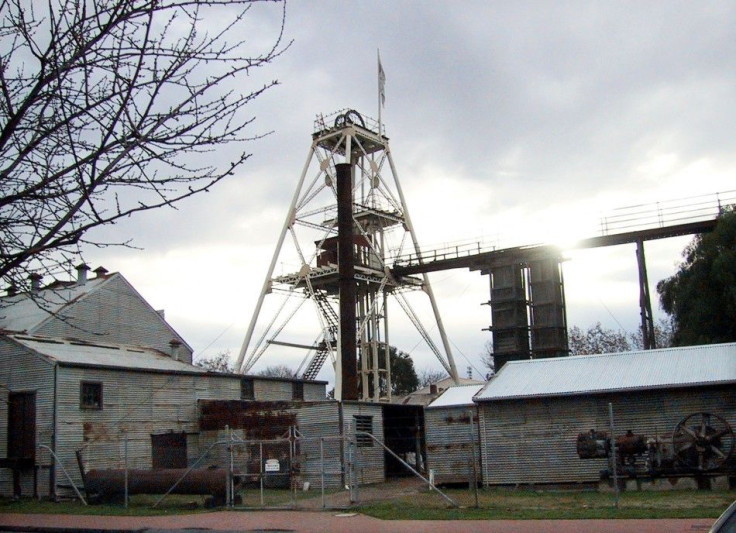Gold Prices Climb To 2-Week High

(REUTERS) -- Gold touched two-week highs on Tuesday, set for its longest stretch of daily gains in eight months, after a rally in the dollar fizzled out as investor concern escalated over the resilience of the U.S. and euro zone economies.
The dollar pared gains to fall against a basket of major currencies after the most recent spate of data from the United States revived some expectations that the Federal Reserve would offer additional support to the economy via a third round of quantitative easing, or purchases of govenrment bonds to anchor market interest rates.
Spot gold was up 0.4 percent at $1,670.76 an ounce by 1245 GMT, having fallen earlier to a session low of $1,658.83.
The price was on track for a sixth day of gains in a row, the longest rally since last August, yet without confirmation from the Fed of more support for the U.S. economy, gains could be limited in the near term, analysts said.
What I would definitely say is, near term, I can't see the price breaking higher, to $1,700 an ounce or above. It needs another catalyst, something more powerful than perhaps in the near future there could potentially be QE, Nikos Kavalis, an analyst at RBS, said.
Of course, an excessively loose monetary policy environment will continue but whether there is a need for another QE, I am not convinced, he said. We are in an enviroment where market-specific fundamentals are taking a bit of a backseat and general sentiment is really the driving force.
Though the disappointing data may fuel expectations that the Fed might launch more QE, two of the central bank's policymakers both said they saw no need for further easing but also said they do not believe the Fed should quickly move to raise rates.
The gold price ended April in the red for the third consecutive month after data showed improvement in the U.S. economy and the Fed's stance became less dovish.
LOW-RATE BOOST
Gold benefits from low interest rates in that it can compete more effectively for investor cash that can see diminished returns from stocks or bonds. Loose monetary policy also creates the potential for a pick-up in inflationary pressures, something gold can help portfolio managers guard against.
The bullion markets have been on the defensive since U.S. Federal Reserve Chairman Ben Bernanke began distancing the Fed from a third round of quantitative easing in testimony to Congress on 29 February, HSBC analyst James Steel said.
Prices appear to be stabilizing above $1,620 an ounce, however, and we believe that net long positions on the Comex in gold and silver have fallen to levels at which latent bulls may begin to rebuild positions. This leads us to believe that prices may bottom out, at least in the near term, he said.
The belief that the gold price may avoid a more protracted sell-off was reflected in investor demand for the metal in exchange-traded products.
ETPs witnessed their largest one-day net inflow in a month, reflecting investor demand for the metal, which has recovered from three month-troughs to hit two-week peaks this week.
Holdings of metal in the world's largest ETPs monitored by Reuters rose by 129,120 oz, or 0.18 percent, by the close of business on Monday to a total of 70.259 million ounces.
Gold's inverse correlation to the dollar softened for a second day running to approach -62 percent, its least negative in nearly two weeks, meaning the bullion price is less likely to move in the opposite direction to the greenback than it was at the start of April, when this correlation deepened to -70 percent.
So the dollar's drop to two-month lows against the Japanese yen on Tuesday did not give the bullion price much of a lift.
Gold may have fallen for three straight months, but it put on its strongest performance against silver since the start of the year.
The gold/silver ratio, which measures the number of ounces of silver needed to buy one ounce of gold, has risen to its highest since January 19, having hit a four-month low on Feb. 29, when the gold price lost more than 5 percent in one day, its largest one-day drop since the collapse of Lehman Brothers in late 2008.
Gold has lost nearly 7 percent in three months, compared with a near-18 percent drop in the price of silver in this time.
Silver which has gained a net 11 percent so far in 2012, was up 0.8 percent on the day at $31.24 an ounce.
Platinum was up 0.1 percent on the day at $1,563.75 an ounce, while palladium was up 0.3 percent at $679.97 an ounce.
© Copyright Thomson Reuters 2024. All rights reserved.





















